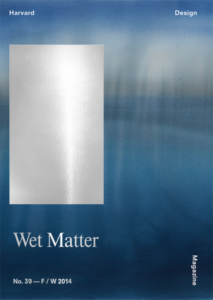The Black Beach
Under the ocean, in the depths where thousands of Africans perished during the Middle Passage from Africa to the Americas, technology corporations plan to bury the vast expenditures of energy necessary to cool the “cloud’s” storage machines. The entombment of these harbingers of totalizing computation is an indirect but haunting reminder of both the absolute expendability of Black bodies and their absolute necessity to the economic ascendancy of America and all subsequent elaborations of a human-centered world.
The Middle Passage has long constituted a persistent infrastructure of transmission across shaky, reverberant Black worlds. The warming of the globe is not the only force raising the levels of the ocean; there is also what James Baldwin referred to as “the fire next time,” the incendiary consequences of continuous assaults on collective Black life.
Avant-garde musician Sun Ra and other Afrofuturists set their sights on outer space as a means to deflect from the traumas of land and sea. But beyond metaphors, extraplantary urbanization was the technical realization of the imaginations and capacities that Blacks honed in all of their passages.
Instead of reiterating sentimental tropes of human liberation, Sun Ra always pointed out that the great Black imperative was the need to “get technical”—that freedom is based on tracing pathways among discordant sectors and horizons. What will Google find out when it encounters the supposedly lost and ghostly technics of that Middle Passage?
Édouard Glissant asks us to think of a space between subjugation and its refusal that makes ambiguous the distinction between land and sea, here and there. In his essay “The Black Beach,” Glissant describes Le Diamant, a beach in southern Martinique, as having a “subterranean, cyclical life.” Le Diamant is an ever-swirling landscape of volcanic sediment and colored sands, indiscernible winds, falling rock and trees, and seemingly interminable backwash—a volatile, heaving place part of neither sea nor land. A solitary man is always pacing the beach at different speeds, never saying anything, but adjusting his steps to the chaos.
Glissant sees the walker as a metaphor for “the rhythm of the world that we consent to without being able to measure or control its course.” The beach lives in its right to opacity, not as a secret removed but as the excessive tracing of too many journeys and crossings of the world’s flotsam—all of the flailing, rubbing against, working through, promiscuous mixing and friction that keep bodies, times, memories, and cultures moving.
Similarly, there is a “city” that cannot be enclosed or colonized, where there are no terms to contain people or things in common. Regardless of the political reality of any city, there must be a way for these diversities to exist, at least partially, without differentials of force or value. To keep pace with the volatility of their continuous recombinant associations, no thing can become too indebted, too dependent on specific characteristics or relations. Of course there are orders of things; things can only be comprehended through their incorporation, through being held in place, kept in line. At least in the United States, blackness has long been the preeminent vernacular of both enforcement and freedom, of the refusal to “hold down the hatch,” born of being brought to the Americas in the “hold”—that instrument, that ontological nothingness of the Middle Passage.
AbdouMaliq Simone is Research Professor at the University of South Australia and Professor of Sociology at Goldsmiths College, University of London. He is author of Jakarta: Drawing the City Near (2014) and City Life from Jakarta to Dakar: Movements at the Crossroads (2009), among other books.
